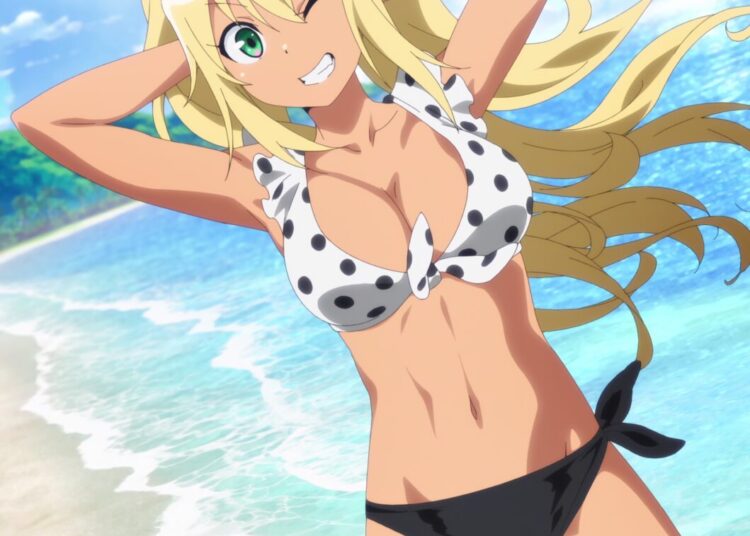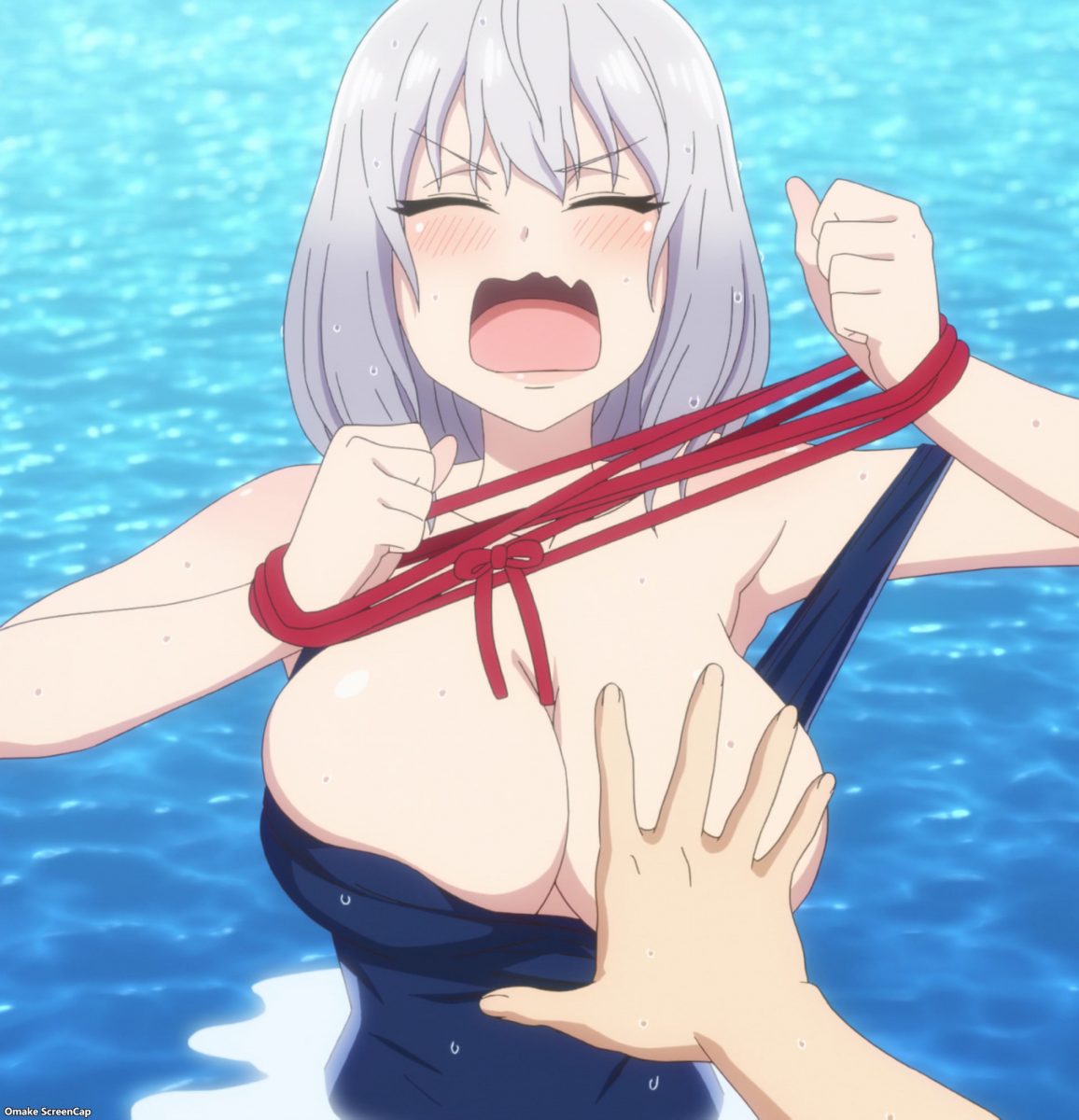In Niigata prefecture, in central Japan, is the Kokujo-ji Temple, one of the oldest Buddhist establishments in the entire country. Built in the year 709 by Empress Genmei, Kokujo Temple has been a source of great cultural happening in its 1,300 years. Besides being a significant worshiping ground for Empress Koken, it was also declared the first holy site of the Sea of Japan (called the North Japan Sea at the time). It is even the home of the annual Fire-Walking Festival. In modern times, Kokujo-ji Temple has been granted the status of cultural property by Kugami City.
Now, Kokujo-ji Temple may potentially be losing its status as a place of cultural significance. In recent years, religious practice has seen a steady decline in Japan, but that is not the reason. As of April this year, Kokujo-ji has installed new scroll art along the temple’s exterior walls depicting five famous nude samurai in suggestive scenes. While bathing nude in a group is a cultural norm in Japan, the presentation in these works of art is… not very subtle. Other artworks depict them riding dragons naked.
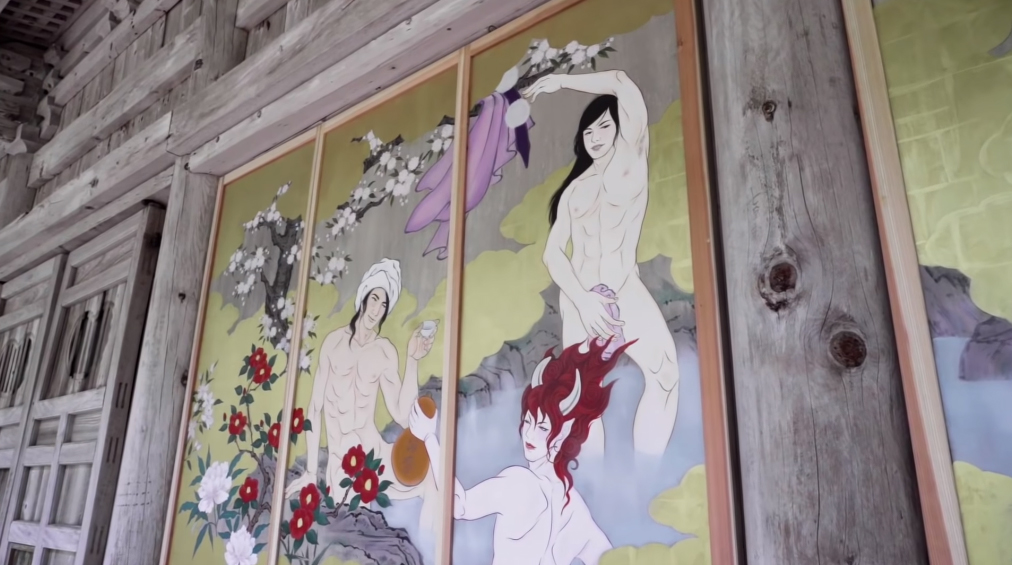
The five figures in questions are Minamoto no Yoshitsune, Musashibo Benkei, Uesugi Kenshin, Ryokan Taigu, and Shuten Doji.
Yoshitsune was a famous Japanese military general during the end of the Heian era and start of the Kamakura era in the Genpei War. Afterwards, Yoshitsune was granted great political accolades. Fueled by jealousy, Yoshitsune’s older brother turned on him. He was forced into hiding until he was eventually betrayed by his nephew and forced to commit seppuku.
Musashibo Benkei was a monk, who later became Yoshitsune’s retainer after being defeated in a duel by him.
Uesugi Kenshin was a warlord during the Sengoku era in the 16th century. He was often referred to as The Dragon of Echigo for his sword skills and prowess on the battlefield.
Ryokan Taigu was a Zen Buddhist monk, and a poet who followed a hermit lifestyle. Ever in his early years, Ryokan took to isolation to train at Zen temples, denying aid from others of any kind. As he got older, Ryokan began to train under the supervision of Zen master Kokusen.
Shuten Doji was a drunken demon lord who abducted woman of villages to be his, and his army’s slaves, as well as their food supply. Originally born a human, Shuten Doji had trained to be a priest. However, when drunk during a temple festival Shuten Doji wore a demon mask to scare everyone present. As punishment for his behavior, the mask fused with his skin, and his body transformed into that of a demon’s.
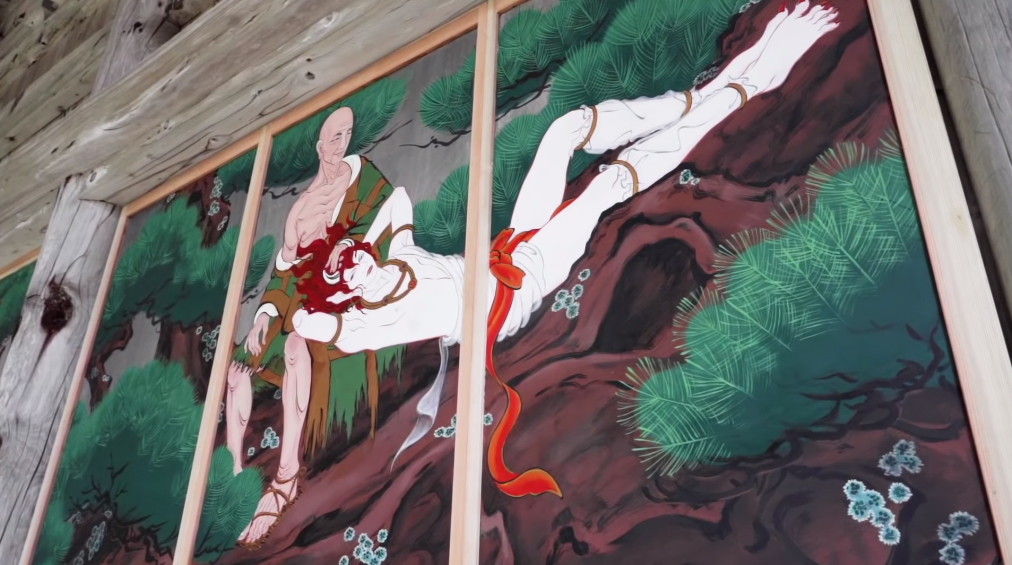
Why these images have sparked controversy is still open to interpretation. Though, a possible clue might be found when looking at similar paintings that earned the same reaction in western culture. One such painting was Luncheon on the Grass, by Édouard Manet. At the time of Manet’s piece’s first display, it was greatly disliked and even laughed at. While the subject matter of a nude woman having lunch with two properly dressed gentleman who are otherwise unaware of her presence doesn’t sound controversial, art historians credit the fact that she is staring directly at the audience. The knowing and uncaring look on her face, despite being observed while naked, creates a shift in atmosphere that crosses the border from an innocent nude study of the body to a picture with blatant pornographic intent.
The scroll art of the temple follows suit. In addition to some figures looking directly at the audience, flowers, clouds, and towels are deliberately drawn over genitalia.
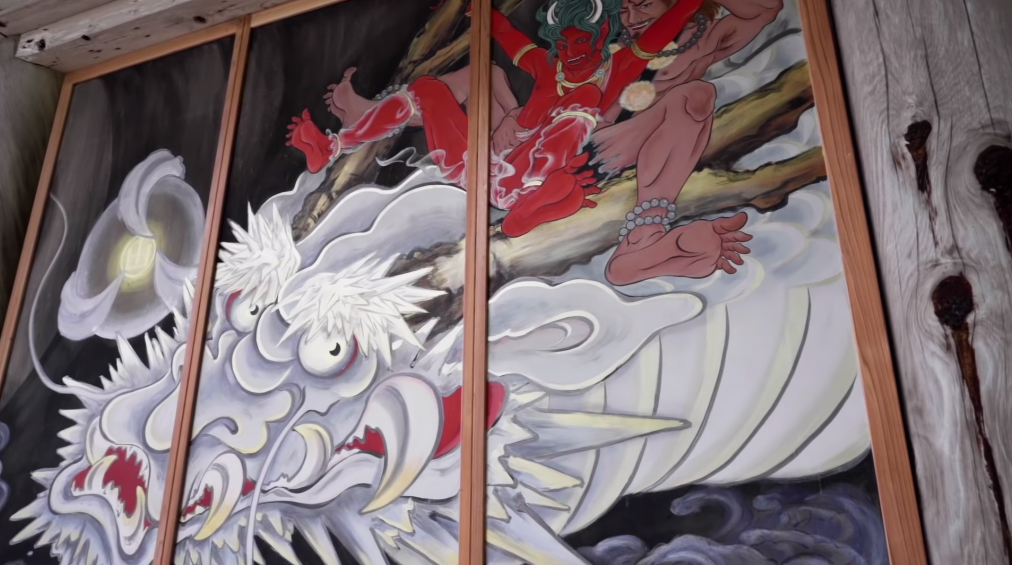
The temple scrolls are drawn by Kyoto based artist, Ryoko Kimura, who graduated from Tokyo University of Fine Arts in 1995. Since then, Kimura’s oil paintings, as well as stained glass works have been featured in galleries and art exhibitions all over the world, including France, China, Taiwan, Korea, and the United States. Their artwork has featured the nude male body many times and is a common reoccurring theme for them. More of Kimura’s work can be viewed on their website.
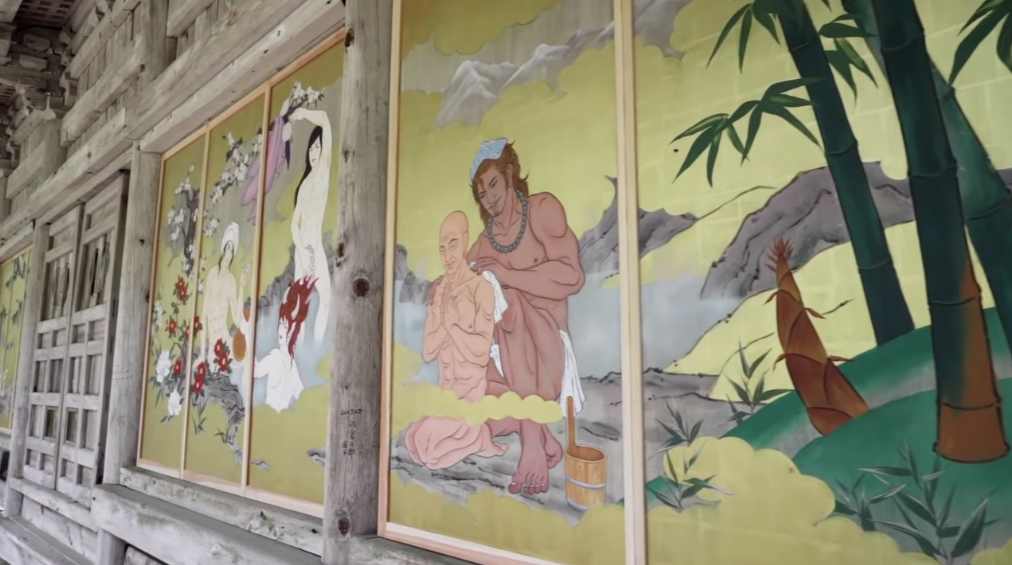
The main reason Kokujo-ji Temple may be losing its status is because the city requires permission for changes such as this at cultural sites. Accordingly, no such request was made, and city officials have asked that the nude samurai scrolls be removed on the argument that they are inappropriate for children. This seems a little hypocritical considering the Kanamara Penis Festival has happened annually since 1969 — featuring candy and chocolate with a phallic shape — still welcomes children. In addition, television shows such as Crayon Shin-chan are filled with sexual humor and foul language, yet targeted at children.
Regardless, the new scrolls have caused an influx of tourism. The temple staff has reported that the scrolls will remain on display for an indefinite period, no matter the consequences.



